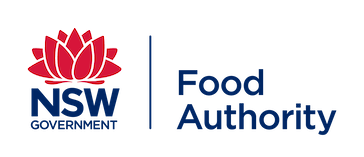Egg transporters
Egg transport vehicles are businesses that transport egg products with at least 80% egg white or yolk, or both, or cracked eggs.
Licensing, registration
Egg transport businesses are required to:
- apply for a Food Authority licence online or download an application (PDF, 426 KB), print and post it
- comply with the relevant food safety and labelling standards
- prepare for regular audits.
You must not commence operations until you are informed that your licence application has been approved. If the premises are found to be operating without a licence, enforcement action may be taken.
- For more see applying for a licence
Skills & knowledge
There are no formal qualifications required for egg transporters, however each food handler and person in control of a food business is required to have food safety skills and knowledge appropriate to their food handling activities.
See FSANZ guide chapter 3.2.2 Division 2 in Safe Food Australia.
Full requirements are set out in the Food Standards Code, Standard 3.2.2 - Food Safety Practices and General Requirements, clause 3.
Construction & facilities
Egg transport vehicles should:
- be designed and constructed to protect food from contamination
- be effectively cleaned and sanitised (where necessary) to protect food from contamination, and
- segregate raw (eg. cracked eggs) from processed food (eg. pasteurised pulp), and protect food from contamination by covering or sealing appropriately.
A transport vehicle’s refrigeration unit should be serviced annually to ensure efficient operation.
Transport vehicles should also be pre-cooled before transportation occurs.
The Food Authority recommends that egg transport businesses should implement these practices, although they are not legal requirements.
Hygiene & handling
Businesses need to maintain daily product and/or air temperature records to demonstrate that cracked eggs and egg products are being transported in accordance with the requirements including:
- cracked eggs are less than 8°C
- egg products with at least 80% egg white or yolk or both are less than 5°C
- frozen products are frozen solid.
For example, records should show load in/out product and/or air temperatures, with temperatures recorded using a thermometer or continuous data logger recorder.
Temperature measuring devices must be easily accessible and demonstrate accuracy of ± 1°C.
If a food handler believes they could have or be a carrier of a food borne illness they must advise their supervisor and ensure they do not handle food that they could contaminate as a result of the disease.
Food handlers must ensure all food contact surfaces are kept clean and adequately protected from contamination.
See FSANZ guide chapter 3.2.2 Division 4 in Safe Food Australia.
For more information see our fact sheets:
Full requirements are set out in Food Standards Code, Standard 3.2.2, Division 4 - Health and Hygiene.
Food safety controls
The following records must be kept for transport of unpasteurised egg products with at least 80% egg white or yolk or both, and cracked eggs:
- names and addresses of the persons or businesses for whom the foods are transported
- names and addresses of the persons or businesses (if known to the holder) that supplied the foods
- addresses of the premises from which the foods were collected for transportation and to which the foods were delivered
- dates on which the foods were transported
- lot identification numbers of the foods transported
- quantity of the foods transported.
Labelling
Requirements for labelling of product apply, as set out in the FSANZ labelling user guides and the Food Standards Code, Chapter 1, Part 1.2 - Labelling and other Information Requirements .
For an introduction and Food Authority factsheets see labelling.
Testing
No routine microbiological or chemical testing of product is required of egg transporters.
Inspections & audits
Egg transport vehicles will be routinely inspected by the Food Authority for compliance with requirements.
Compliance or regulatory action will be taken if required.
There are fees for audits and inspections, payable by the licence holder.
For more see audits, inspections and compliance.
Legislation & standards
Egg transport facilities also need to meet the requirements set out in:
- Food Act 2003 (NSW)
- Food Regulation 2015 including Part 13 for the Egg Food Safety Scheme
- Food Standards Code, including:
- Chapter 1, Part 1.2 - Labelling and other Information Requirements
- Standard 3.2.2 - Food Safety Practices & General Requirements
- Standard 3.2.3 - Food Premises and Equipment
See also the factsheet Requirements for egg transporters.
